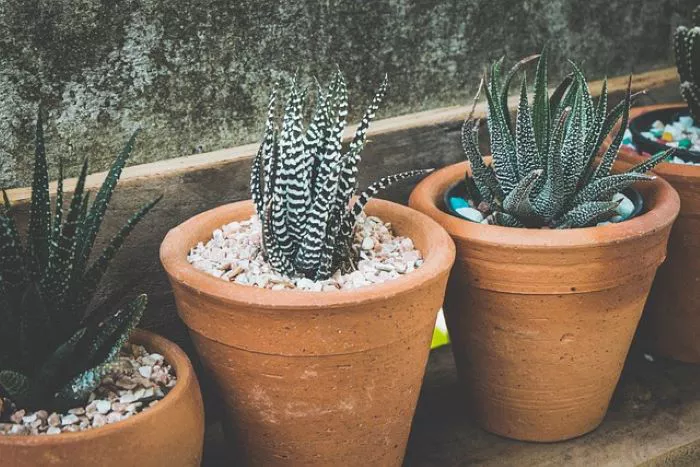Creating a strawberry pot filled with succulents is an innovative and visually appealing way to display these hardy plants. A strawberry pot, typically designed for growing strawberries, features multiple openings that allow for planting in various levels. This design is perfect for succulents, as it maximizes space and creates a stunning vertical garden. This article will guide you through the process of planting a strawberry pot with succulents, covering materials, planting techniques, and care.
Understanding the Strawberry Pot
A strawberry pot is a container with several side openings that allow plants to grow outwards as well as upwards. This design is beneficial for succulents, which thrive in well-draining soil and can adapt to various light conditions. The pot’s vertical structure not only saves space but also adds an aesthetic element to gardens, patios, or indoor spaces.
Choosing the Right Succulents
Selecting the right succulents is key to creating a successful strawberry pot arrangement. Here are some tips for choosing suitable plants:
Variety: Choose a mix of succulents that vary in color, shape, and size. This diversity will enhance the visual appeal of your strawberry pot. Consider using trailing succulents, such as string of pearls or sedum, alongside upright varieties like echeveria or haworthia.
Light Requirements: Ensure that the succulents you select have similar light requirements. Most succulents prefer bright, indirect sunlight. Grouping plants with similar needs will make care easier.
Growth Habits: Consider the growth habits of the succulents. Some varieties may grow larger or spread more than others. Plan your arrangement accordingly to prevent overcrowding as the plants mature.
Gathering Materials
Before planting, gather all necessary materials. Here is what you will need:
Strawberry Pot: Choose a sturdy strawberry pot made from clay, ceramic, or plastic. Ensure it has drainage holes at the bottom.
Succulent Soil: Use a well-draining succulent or cactus potting mix. This type of soil helps prevent root rot by allowing excess moisture to escape.
Succulent Plants: Select your chosen succulents based on the guidelines mentioned earlier.
Gardening Tools: Have a small trowel, scissors, and gloves on hand for planting and handling the plants.
Decorative Elements: Optional decorative elements such as stones, gravel, or mulch can enhance the visual appeal of your arrangement.
Preparing the Strawberry Pot
Before planting, prepare your strawberry pot to ensure the best conditions for your succulents. Follow these steps:
Clean the Pot: If you are reusing a pot, clean it thoroughly to remove any old soil or residues. This helps prevent diseases and pests from affecting your new plants.
Add Drainage Material: Place a layer of small stones or gravel at the bottom of the pot. This will improve drainage and help prevent water from sitting at the bottom.
Fill with Soil: Fill the pot with succulent soil, leaving some space at the top for planting. Ensure that the soil is well-aerated and free from clumps.
Planting the Succulents
Now it is time to plant your succulents in the strawberry pot. Follow these steps for a successful planting process:
Start from the Top: Begin by planting the largest succulents in the top opening of the pot. Gently remove them from their nursery pots and loosen any tightly bound roots. Place them in the soil and fill around the roots, ensuring they are secure.
Plant the Side Openings: Move to the side openings of the pot. Choose smaller succulents for these areas, as they will have less space to grow. Insert the plants into the openings, making sure they are well-supported by the soil.
Fill Remaining Spaces: Continue planting until all openings are filled. Ensure that each plant is positioned securely in the soil. Leave some space between plants to allow for growth.
Tamp Down the Soil: After planting, gently tamp down the soil around each plant to eliminate air pockets. This helps ensure good root contact with the soil.
Watering and Initial Care
After planting, proper watering and care are essential for the health of your succulent arrangement. Here are some guidelines:
Water Sparingly: After planting, water the pot lightly. Allow the soil to dry out completely before watering again. Overwatering is a common issue with succulents, so it is better to err on the side of caution.
Monitor Light Conditions: Place the strawberry pot in a location that receives bright, indirect sunlight. Monitor the plants for any signs of stress, such as stretching or discoloration, which may indicate insufficient light.
Adjust as Needed: If you notice any plants struggling, consider adjusting their position or providing additional light. Succulents can be sensitive to changes in their environment, so be attentive to their needs.
Ongoing Care and Maintenance
To keep your succulent strawberry pot thriving, follow these ongoing care tips:
Fertilizing: During the growing season, typically spring and summer, you can fertilize your succulents with a diluted balanced fertilizer every four to six weeks. This will provide essential nutrients for healthy growth.
Pruning: Regularly check for any dead or damaged leaves and remove them promptly. This helps maintain the overall appearance of the pot and prevents pests and diseases.
Pest Management: Monitor your succulent pot for any signs of pests, such as mealybugs or aphids. If you notice any infestations, treat them promptly with natural insecticides or neem oil.
Seasonal Adjustments: As seasons change, adjust your care routine accordingly. Succulents may require less water during the winter months when they enter dormancy.
Conclusion
Planting a strawberry pot with succulents is a creative way to showcase these beautiful plants while maximizing space. By selecting the right succulents, preparing the pot properly, and providing ongoing care, you can create a stunning and thriving arrangement. Enjoy the process of planting and watching your succulent strawberry pot flourish, adding beauty to your garden or indoor space. With a little attention and care, your succulent arrangement will thrive and provide enjoyment for years to come.


